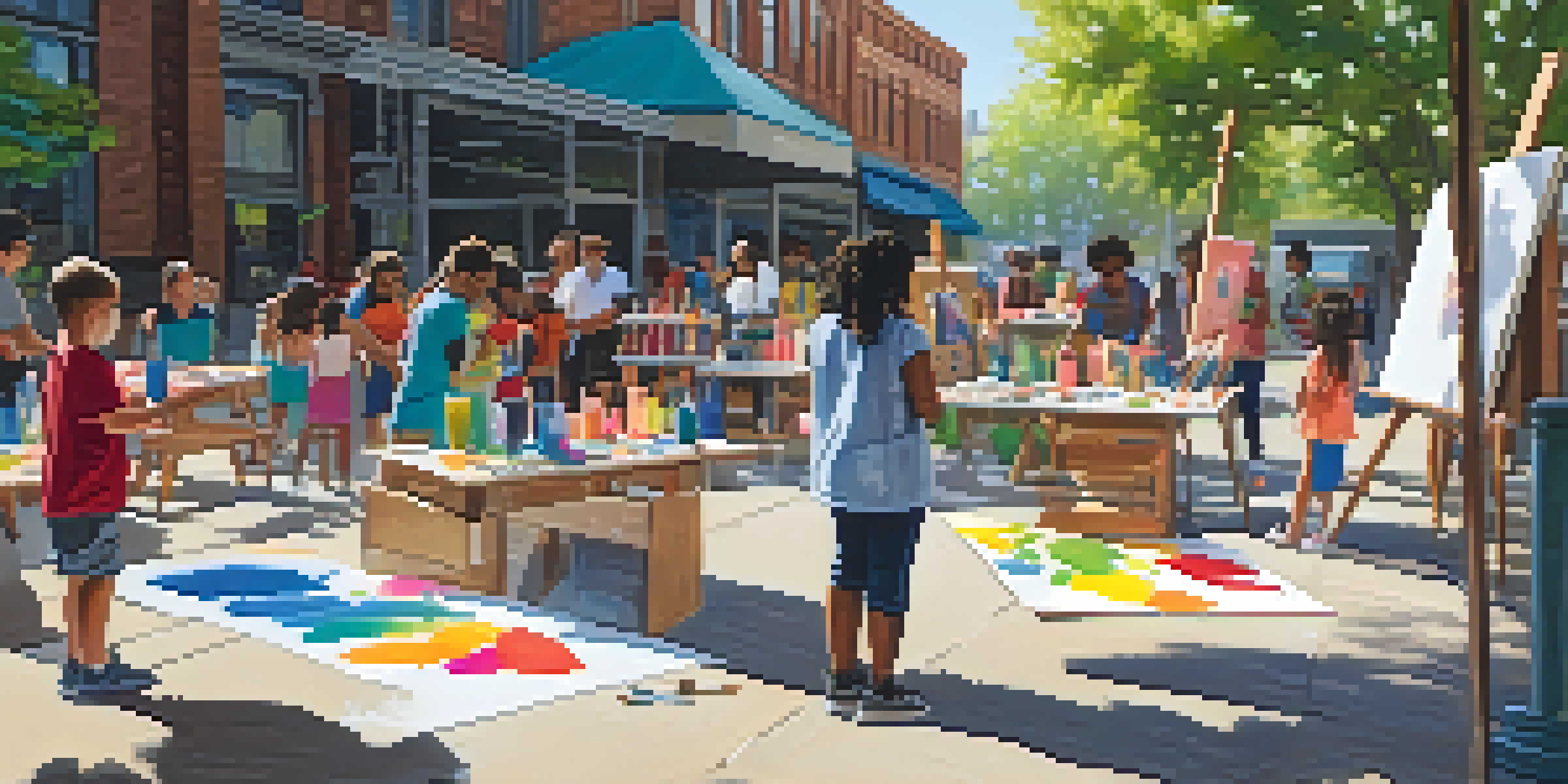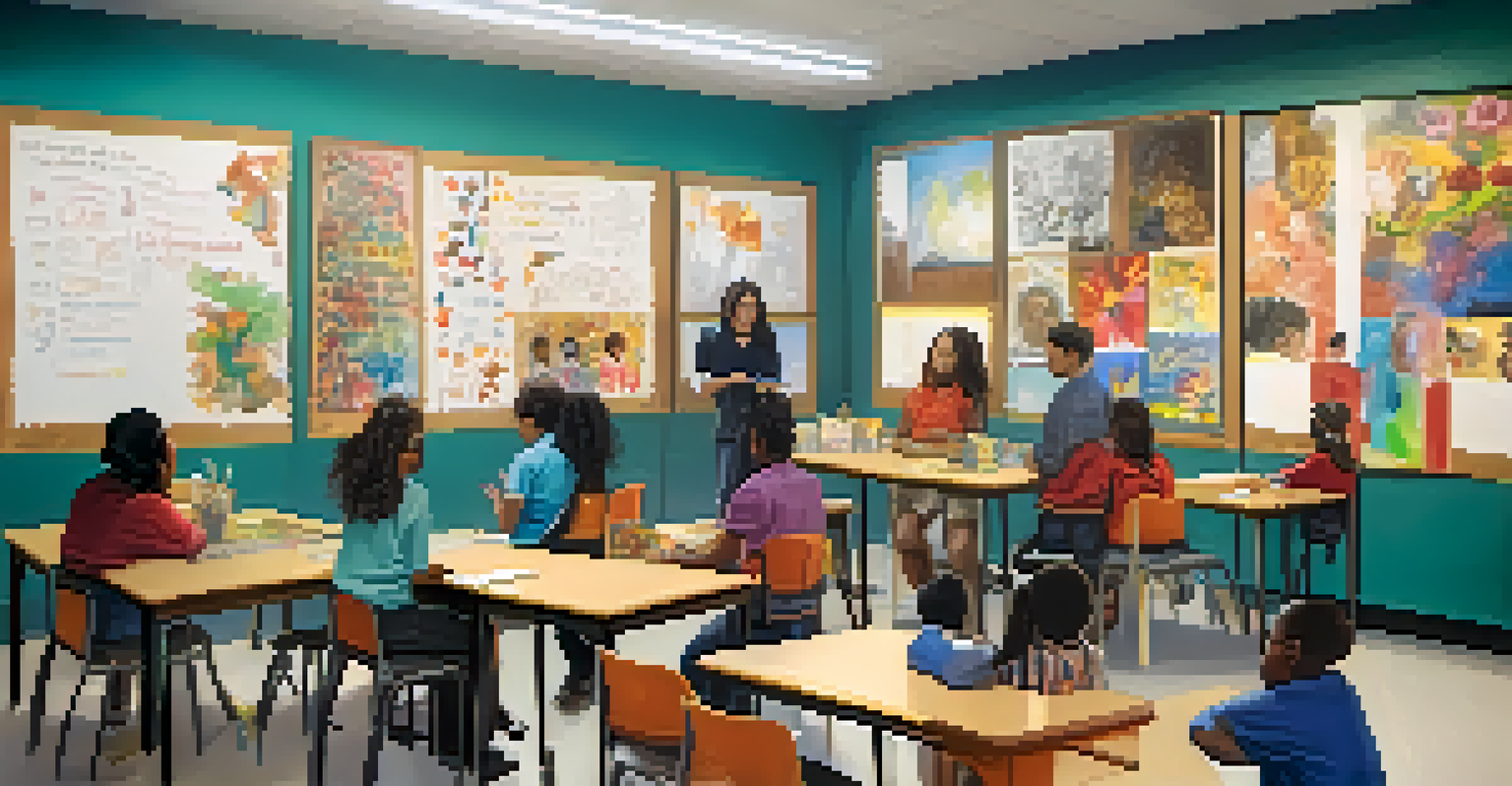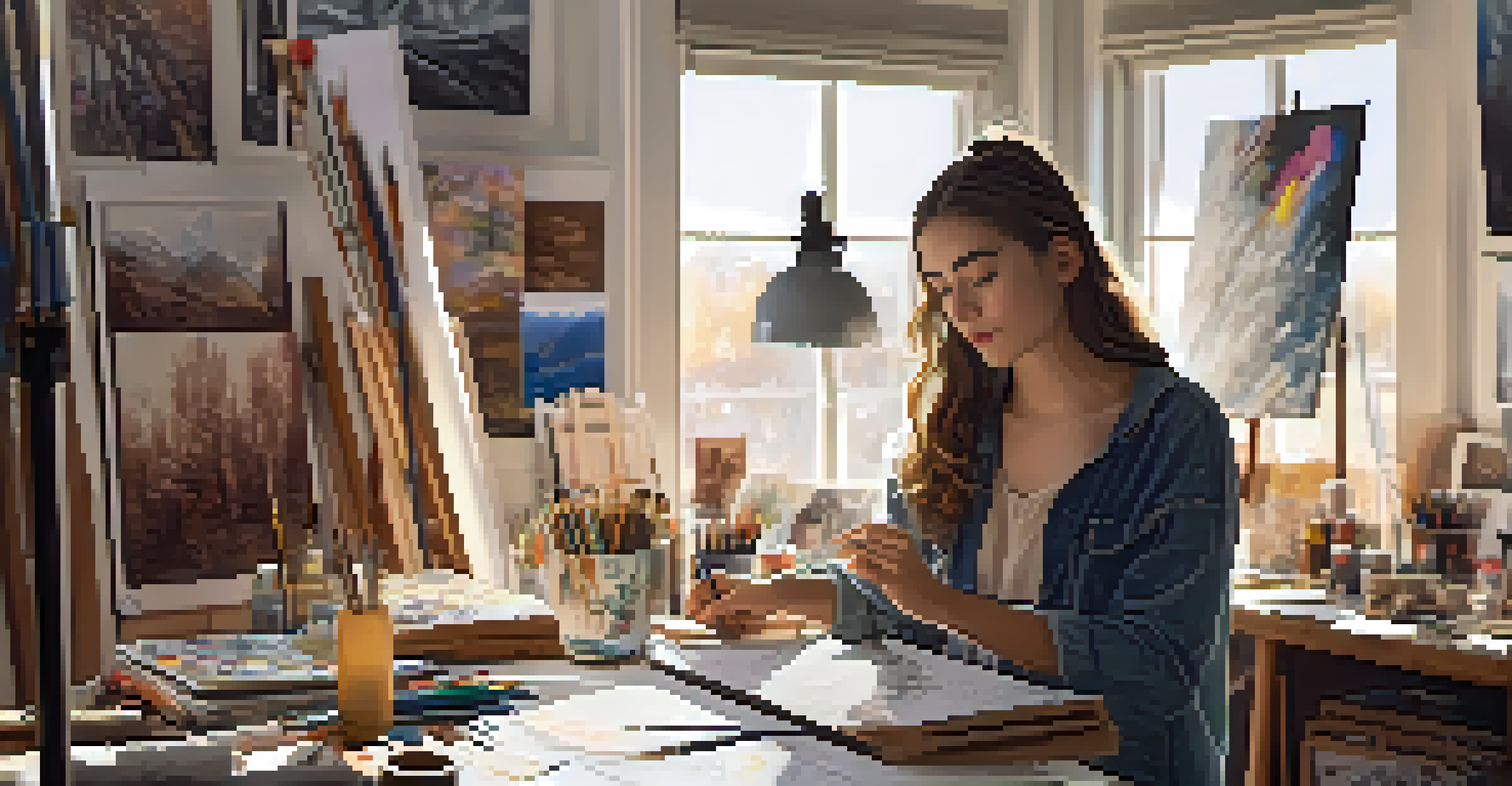The Importance of Equity in Art Education and Access

Understanding Equity in Art Education and Access
Equity in art education means ensuring that every student, regardless of their background, has access to the same opportunities. It acknowledges that not all students start from the same place due to factors like socioeconomic status, ethnicity, or geographical location. By focusing on equity, we can level the playing field and foster a more inclusive environment that encourages creativity and expression.
Art is not freedom from discipline, but disciplined freedom.
Art education isn't just about technique; it's also about perspective. When we embrace equity, we allow diverse voices and experiences to shape the curriculum, making it richer and more relevant. This not only benefits students of varying backgrounds but also enhances the artistic community as a whole by introducing a myriad of viewpoints.
Consider the example of community art programs that target underserved neighborhoods. By providing resources and training, these programs empower individuals who may not have had access to art education otherwise. This approach exemplifies how equity can transform lives and communities through the arts.
The Barriers to Access in Art Education
Barriers to access in art education can take many forms, including financial constraints, lack of facilities, and insufficient trained instructors. For instance, students in underfunded schools may not have access to art supplies or qualified teachers, which limits their exposure to artistic expression. Recognizing these barriers is the first step toward creating solutions that make art education more accessible.

Moreover, cultural barriers can also play a significant role. Some communities may not prioritize the arts due to economic pressures or cultural perspectives that undervalue creative expression. By acknowledging these barriers, we can tailor our approaches to meet the needs of different communities, fostering an environment where art is appreciated and celebrated.
Equity Fosters Inclusive Art Education
Ensuring all students have access to art education regardless of their background promotes creativity and enriches the artistic community.
Imagine a student who loves to draw but has never been encouraged to pursue it because of financial limitations. By addressing these barriers head-on, we can ensure that passion for art is nurtured rather than stifled, allowing for a more diverse range of artists to emerge.
The Role of Community Organizations in Promoting Equity
Community organizations play a crucial role in promoting equity in art education. They often serve as bridges between resources and underserved populations, providing workshops, supplies, and mentorship. These organizations are essential in creating a supportive environment where individuals can cultivate their artistic skills without the constraints of financial burden.
Creativity takes courage.
For example, organizations like ArtReach provide free art classes to children in low-income neighborhoods, offering them opportunities they might not otherwise have. By partnering with local schools and artists, these programs help to fill the gaps left by traditional education systems. This collaborative approach not only enriches the students’ experience but also strengthens the community.
Through these initiatives, community organizations can transform the landscape of art education, ensuring that equity is not just an ideal but a reality for aspiring artists everywhere.
The Impact of Technology on Art Education Access
Technology has revolutionized many aspects of education, including art. Online platforms and resources make it possible for students to access high-quality art education from anywhere, breaking down geographical barriers. This democratization of information allows individuals from various backgrounds to explore their creativity with minimal financial investment.
Consider the rise of virtual art classes and tutorials on platforms like YouTube or Skillshare. These resources provide valuable instruction that can supplement traditional education, especially for students who may not have access to local art teachers. By leveraging technology, we can expand the reach of art education beyond traditional classrooms.
Community Organizations Drive Change
Local organizations provide essential resources and support, helping to bridge gaps in access to art education for underserved populations.
However, it’s essential to recognize the digital divide. Not everyone has equal access to the internet or devices, which can perpetuate existing inequalities. Thus, while technology has the potential to enhance access, we must remain vigilant and work towards ensuring that all students can benefit from these advancements.
Curriculum Development: Making It Inclusive and Diverse
An inclusive and diverse curriculum is vital for fostering equity in art education. This means not only including artists from various backgrounds but also addressing historical contexts and contemporary issues that resonate with different communities. A curriculum that reflects diversity encourages students to see themselves in the art they study and creates a more meaningful learning experience.
For instance, integrating works by artists from various cultures can help students appreciate the rich tapestry of global art. This approach not only broadens their artistic horizons but also cultivates empathy and understanding. When students engage with diverse perspectives, they are better equipped to express themselves authentically.
By actively seeking to diversify the curriculum, educators can help dismantle stereotypes and foster a more inclusive environment. This not only benefits students of color but also enriches the artistic landscape as a whole.
The Importance of Mentorship in Art Education
Mentorship is a powerful tool in art education that can significantly enhance equity. Having a mentor can provide guidance, support, and encouragement that many students need to pursue their artistic passions. Mentors can also share valuable resources and connections that open doors to opportunities that students may not have considered.
Consider a young artist who struggles with self-doubt. A mentor can help them navigate challenges, offering constructive feedback and encouragement to build their confidence. Through this relationship, students are more likely to persist in their artistic endeavors, leading to greater success and fulfillment.
Technology Expands Art Education Access
Online platforms democratize art education, allowing students to learn from anywhere, though issues like the digital divide must be addressed.
Creating mentorship programs that connect aspiring artists with experienced professionals can bridge gaps in access and equity. This nurturing relationship can inspire the next generation of diverse artists, fostering a richer and more vibrant artistic community.
Future Directions for Equity in Art Education
Looking ahead, it's crucial to continue advocating for equity in art education. This involves not only identifying and addressing existing barriers but also pushing for systemic changes that support marginalized communities. As we move forward, collaboration among educators, artists, and community organizations will be essential in creating sustainable solutions.
One promising direction is the expansion of art programs in public schools that specifically target underrepresented groups. By prioritizing funding and resources for these programs, we can ensure that all students have the opportunity to explore their creativity. This could lead to a future where diverse voices are celebrated in the art world.

Ultimately, the goal is to create an art education landscape that is equitable and accessible for everyone. By working together and staying committed to this vision, we can enrich our culture and inspire countless individuals to express themselves through art.